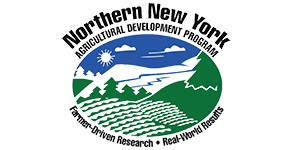 NNYADP-Funded Research Shows How to Boost Spring Hay Harvest in Northern NY
NNYADP-Funded Research Shows How to Boost Spring Hay Harvest in Northern NY
Northern N.Y.; May 7, 2018. Opportunities to boost spring hay crop silage yield and quality were evaluated in research funded by the farmer-driven Northern New York Agricultural Development Program. The results of regional on-farm trials with winter rye and triticale in 2016 and 2017 by the W.H. Miner Agricultural Research Institute in Chazy, NY, are now posted in the Field Crops section at www.nnyagdev.org.
Winter forage crops contribute to soil conservation and can improve soil quality when following a corn silage crop.
“Our evaluation showed that winter rye and triticale can be established as winter forage crops planted in a field after corn silage harvest in Northern New York with economical yields and high quality for harvest as hay crop silage, and these winter forages can be successfully double cropped with corn silage, giving farmers another crop production risk management strategy,” said project leader and Miner Institute Research Agronomist Eric Young.
Triticale was successfully established using no-till methods after termination of an alfalfa-grass field. Future research will help determine the best methods for winter forage crop establishment across varying soil conditions.
Growing winter forage crops for spring harvest as hay for dairy cows and livestock is becoming increasingly popular, but weather can challenge yield and successful retention of crop nutrients.
A complete report, including evaluation of the winter forage crops for dry matter yield, crude protein, water soluble carbohydrates, fiber digestibility, and phosphorus, potassium and lignin content, is posted on the Northern New York Agricultural Development Program website.
Funding for the farmer-driven Northern New York Agricultural Development Program is supported by the New York State Senate and administered by the New York State Department of Agriculture and Markets.